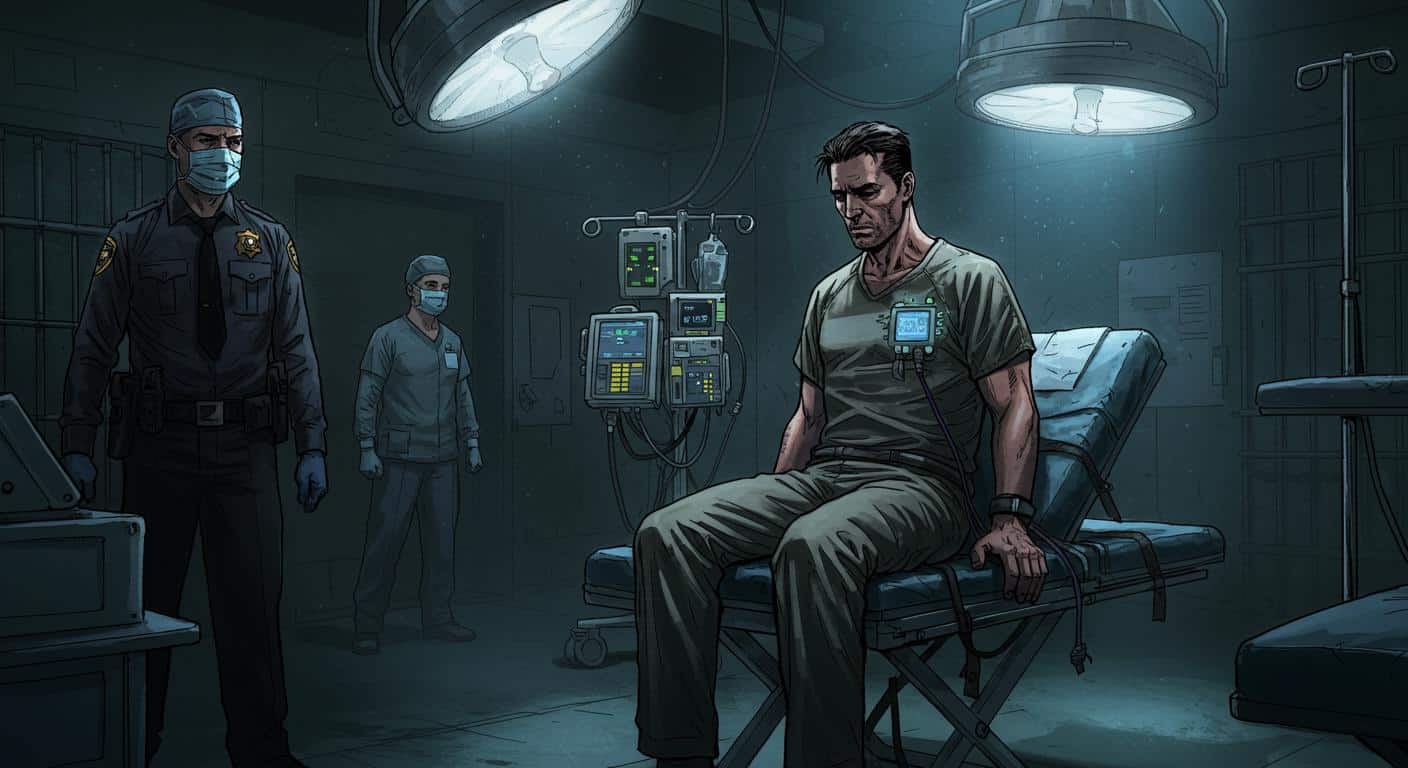If you ever needed a reminder that reality can outpace even the most absurd corners of speculative fiction, look no further than the case of Byron Black in Tennessee. As detailed in CBS News coverage, a judge has just ordered the state to deactivate a condemned inmate’s pacemaker-defibrillator before executing him by lethal injection. That’s right—a device intended to save a life may now complicate the business of ending it. The concern? The device might interpret the state-administered lethal injection as an ordinary cardiac emergency and—ever diligent—try repeatedly to restart the condemned heart.
The Unplugging of Byron Black
Byron Black, now 69 and beset with dementia, multiple organ failures, diabetes, prostate cancer, and wheelchair confinement, was convicted for the 1988 murders of his girlfriend and her two daughters—a case well-documented and not in dispute here. As CBS News points out, what is unusual are the logistics of ensuring his heart-regulating device, implanted less than two years ago, does not attempt a late-stage rescue during the final moments of a lethal injection using pentobarbital.
The judge’s order, according to both CBS and The Mirror US, specifies that a certified medical professional must be present and equipped to deactivate Black’s implant seconds before the injection. The intention is to prevent what Black’s attorneys described as “multiple rounds of shocks and extreme pain and suffering” as the device tries to restore a heart rhythm that state authorities are, paradoxically, working to end.
What’s it take to actually turn off this modern safety net? Both sources specify that a doctor must apply a device over the implant to send a deactivation command—no simple flip of the switch here, and notably, The Mirror US highlights the challenge Tennessee faces in even finding a willing specialist. As if the standard death penalty protocol wasn’t already arcane enough.
The Medicalization of Death
It’s hard to overlook the contradictions: the state must now involve healthcare professionals—whose oaths bind them to preserve life—to help stage-manage a smoother execution. Black’s condition, documented by his counsel and detailed by CBS News, includes a span of health complications, many connected to early-life exposure to alcohol and lead, and later, chronic illness and cognitive decline. With his heart now dependent on battery-powered intervention, the procedural concern is not about whether execution itself is humane but if the defibrillator might inadvertently amplify suffering.
The state’s attorneys, as cited in both outlets, argued the risk is minimal—that pentobarbital’s effects would likely render Black unconscious long before the device could cause pain. Even in the event of an unintended jolt, they claim, he would not be aware of it. Black’s legal team, meanwhile, disputes this, referencing research that distinguishes unresponsiveness from true insensibility; they argue pentobarbital’s “amnesic” and paralytic properties do not guarantee relief from acute sensation. CBS News underscored this scientific debate with details from expert testimony offered during two days of hearings.
For those following execution protocol from the comfort of a library or living room, the underlying question lingers: just how clinical must the act of killing become before it stops resembling justice and starts to read like the instruction manual to a malfunctioning life-support system?
A Device Out of Time
Medical leaps like the implantable cardioverter-defibrillator, according to both CBS News and The Mirror US, were devised to extend lives and improve quality. In Black’s case, the device was fitted in May 2024, long after his conviction, aimed at compensating for advanced heart disease. The twist, detailed by both sources, is that these technological advances mean death row inmates routinely outlive older expectations, with new protocols required to address the intersection of artificial life-support and court-sanctioned death.
The Mirror US spotlights the awkward logistics: to lawfully and “humanely” end Black’s life, Tennessee officials must ensure all life-saving technology is suspended, right down to the programming of a device tucked near his left collarbone. One wonders, is this the shape of things to come—will every execution need an IT department, too?
The Lingering Oddities of Justice
All this unfolds while deeper legal and ethical challenges smolder in the background. Both news sources explain that Black’s attorneys have repeatedly pressed for his sentence to be commuted, citing diagnoses from prenatal exposure all the way to adult dementia, arguing execution of an intellectually disabled individual would contravene Tennessee’s constitution. Their efforts have so far been unsuccessful: the state Supreme Court declined to order a mental competency hearing, and, as The Mirror US notes, even the U.S. Supreme Court effort is still pending.
What happens if the medical deactivation cannot be completed in time? Both outlets report that Judge Russell Perkins was clear—the order was not intended to halt or delay the execution, nor did he believe it posed significant administrative burden. Yet even that seemingly simple assurance belies how strangely complex modern death penalty cases have become.
From a purely procedural angle, the idea of pausing a pacemaker as a matter of judicial order hints at the theater of bureaucracy. The state will spare no technical effort to ensure the process’s smoothness, even as it wrestles with the question of what, exactly, counts as a “torturous outcome.” Attorney Kelley Henry, quoted in both CBS News and The Mirror US, put the stakes in stark terms: “It’s horrifying to think about this frail old man being shocked over and over… Today’s ruling averts that torturous outcome.” Is this truly the best worst-case scenario available?
When the Trouble Is Technical
In synthesizing all this—from the parsing of studies about pentobarbital’s effects to the necessity of finding a technician with steady hands and a willingness to participate—the larger point emerges: sometimes, the boundary between humane execution and bureaucratic farce is nothing more than a device left powered on. Does the methodical protocol for disabling a heart device before lethal injection represent a triumph of compassion, or a quiet coda of surrealism in capital punishment’s long, winding history?
As both CBS News and The Mirror US have detailed, the state’s pursuit of “orderly” justice now includes a checklist item never imagined by earlier generations: unplugging the heart before stopping it for good. One has to ask, as we layer more rules, routines, and paradoxes onto the business of ending lives, how many more times will technological progress find itself, circuit by circuit, at odds with the rituals of the old?







